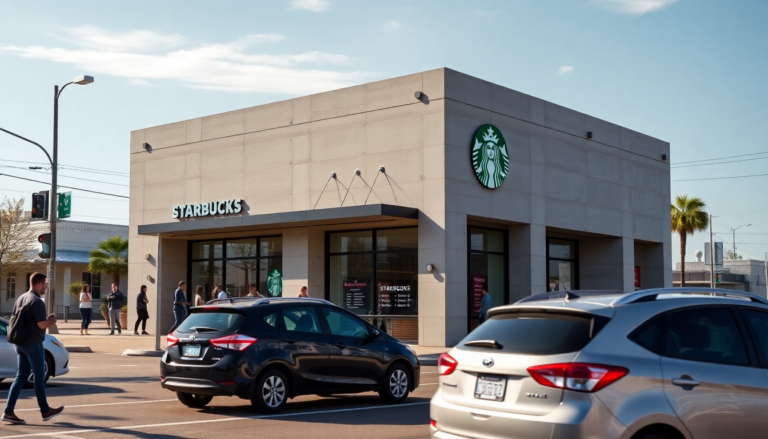Argomenti trattati
Introducing the first 3D-printed Starbucks in Brownsville
On April 28, an innovative new Starbucks store will open in Brownsville, Texas, marking a significant milestone in architectural technology. This 1,400 sq ft drive-through establishment is not just another coffee shop; it is the first Starbucks in the United States to be entirely constructed using 3D printing technology. The building’s unique structure was created using the Cobod BOD2 concrete printing system, which represents a shift in how commercial buildings can be realized. This development is spearheaded by Germany’s Peri 3D Construction, which has been pioneering large-scale 3D printing projects since 2024.
Revolutionizing construction with 3D printing
3D printing is often associated with small-scale projects and consumer products, but the technology is evolving to meet the demands of larger construction ventures. Unlike traditional methods that typically use plastics, the materials employed in the BOD2 printer are cement-based, allowing for robust and scalable construction. This shift not only promises faster building times but also offers the potential for more sustainable practices in the future.
The new Starbucks will cater primarily to those on the go, featuring a drive-through and a mobile order pickup desk. Interestingly, there will be no indoor seating, suggesting a tailored approach to modern consumer habits where convenience and speed are prioritized.
The global impact of large-scale 3D printing
According to Cobod, over 50 BOD2 printers have been deployed worldwide in the last three years, signaling a growing trend in the adoption of 3D printing technology in the construction industry. These printers are not limited to commercial buildings; they are also utilized by residential builders, educational institutions, and material manufacturers. As this technology becomes more prevalent, it is likely that we will see similar constructions in our local communities, transforming the landscape of urban development.
The aesthetics and challenges of 3D-printed structures
While the concept of a 3D-printed Starbucks is undoubtedly groundbreaking, the execution has its challenges. Upon closer inspection, the finish of the building reveals some imperfections. The material used in the construction shows signs of ‘stepping,’ a phenomenon where the layers of material appear misaligned due to the printing process. This can lead to visible joins and a less polished appearance compared to traditional buildings.
Previous innovations in 3D printing
This isn’t the first time we’ve seen large-scale 3D printing used creatively. Earlier projects have featured consumer 3D printers capable of impressive build volumes, with one model boasting dimensions of 800 x 800 x 1000 mm. Another notable project involved a YouTuber creating a life-size 3D model of himself using a custom-built printer with a build area of 1110 x 1110 x 2005 mm. These projects highlight the versatility and potential of 3D printing technology across various domains.
Stay updated with technological advancements
As we embrace this new era of construction technology, following tech news outlets like Tom’s Hardware can keep you informed about the latest innovations. Whether it’s advancements in 3D printing or other exciting tech developments, there’s always something new on the horizon.
Mark Tyson, a news editor at Tom’s Hardware, emphasizes the importance of covering the full spectrum of tech innovations, from semiconductor designs to unconventional projects that push the boundaries of current technology.

